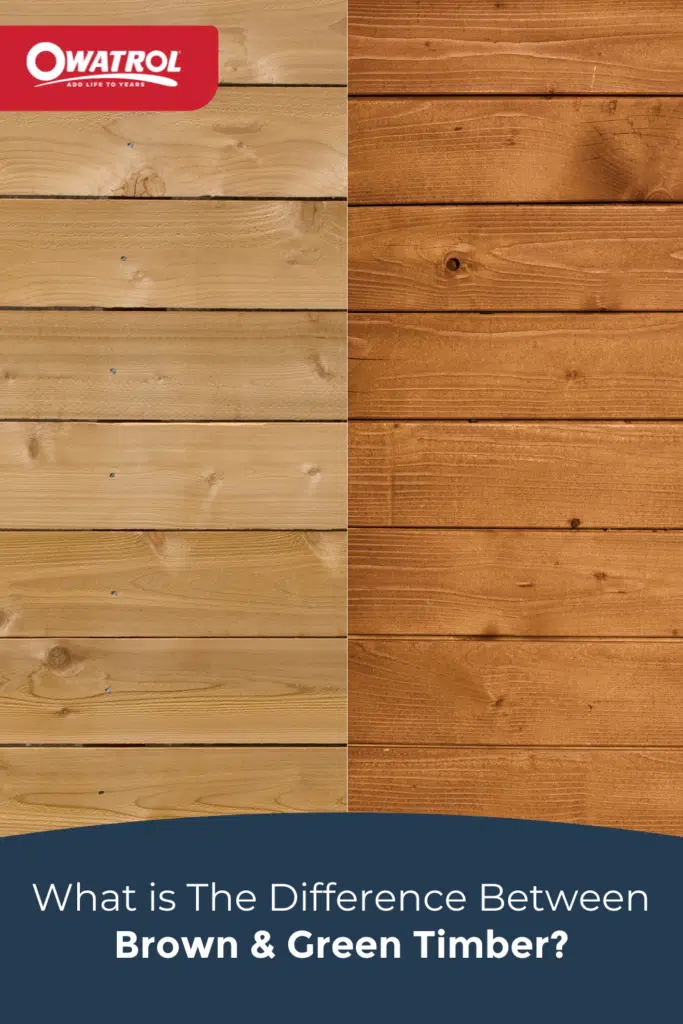If you have begun research into a new fence you may have come across what most people refer to as green or brown treated timber. We’re going to explain the differences between the two and help you decide on which is best for your project.
What is treated timber?
Treated timber is when wood is dipped or sprayed in specific chemicals to extend the life of the wood by preventing certain things such as insect damage, rot and fungal attack. This is very handy for use on wood that will be exposed to the harsh UK weather. It is most commonly seen on fencing and deck boards but can also be used on furniture and cladding.
Once treated, green and brown timber are usually labelled with a UC3 or UC4 rating. The latter is a more harsh treatment than the former and is for use on wood that is in permanent contact with the ground (such as fence posts). The former is for wood that is not in contact with the ground such as fence panels.
Green Timber
Green timber is the natural wood colour of the timber but with a slight hint of green to it. But why is it green?
Despite the name, green timber isn’t really ‘green’ in the way you might think it is. The slight green tint on the timber isn’t meant as a fashion statement but rather the naturally occurring result of the pressure treating process the timber has been subjected to. This is done to extend the life of the wood and increase its overall durability.
To be specific, the green you see is a copper based preservative that is applied in a vacuum, or other pressure treatment plant, which then reacts with the air and oxidises. Similar to the naturally occurring verdigris that occurs on copper roof tops.
Brown Timber
It may seem surprising, but brown timber is actually the same as green timber, except for one thing. They add a brown dye to the copper preservative mix. This in turn then allows for the timber to have a more traditional brown colour. This makes it a little more expensive to buy when compared to green timber.
However, it should be noted that this specific type of dye is just an additive in the pressure treating process and isn’t really meant for use as a long term decorative finish. Over time, the treatment will fade due to UV rays, weathering and pollution.
Really it all comes down to personal preference, budget and availability.
How do I care for treated timber?
Over time, wood will naturally change in colour due to UV exposure, weathering and pollution. You will find that the wood that was once clean and bright will eventually become a silvery grey. This is completely normal and can actually be beneficial to your wood to go through.
We recommend letting your wood naturally weather with a helping hand of Seasonite new wood protector and stabiliser. Then after 6-12 months, protect it with a finishing coat.
If you like the natural look of the timber, you could opt to use a saturating wood oil such as Textrol. It is available in 7 shades, including clear, and is quick and easy to apply.
If you would prefer an opaque finish, we recommend using a product such as Owatrol Shed & Fence Paint. It’s available in 35 different shades and when applied to bare wood is guaranteed against flaking and peeling for 15 years on vertical surfaces.
We recommend using Net-Trol wood cleaner and brightener before applying any finish to make sure you get the best result possible.
So there you have it, now you know the difference between brown and green timber!
If you have any other advice or top tips, please feel free to leave them in the comments below. We love hearing from you!
You can also follow us on Twitter, Facebook, Instagram or Pinterest at @OwatrolUK or find us under the hashtag #OwatrolUK









